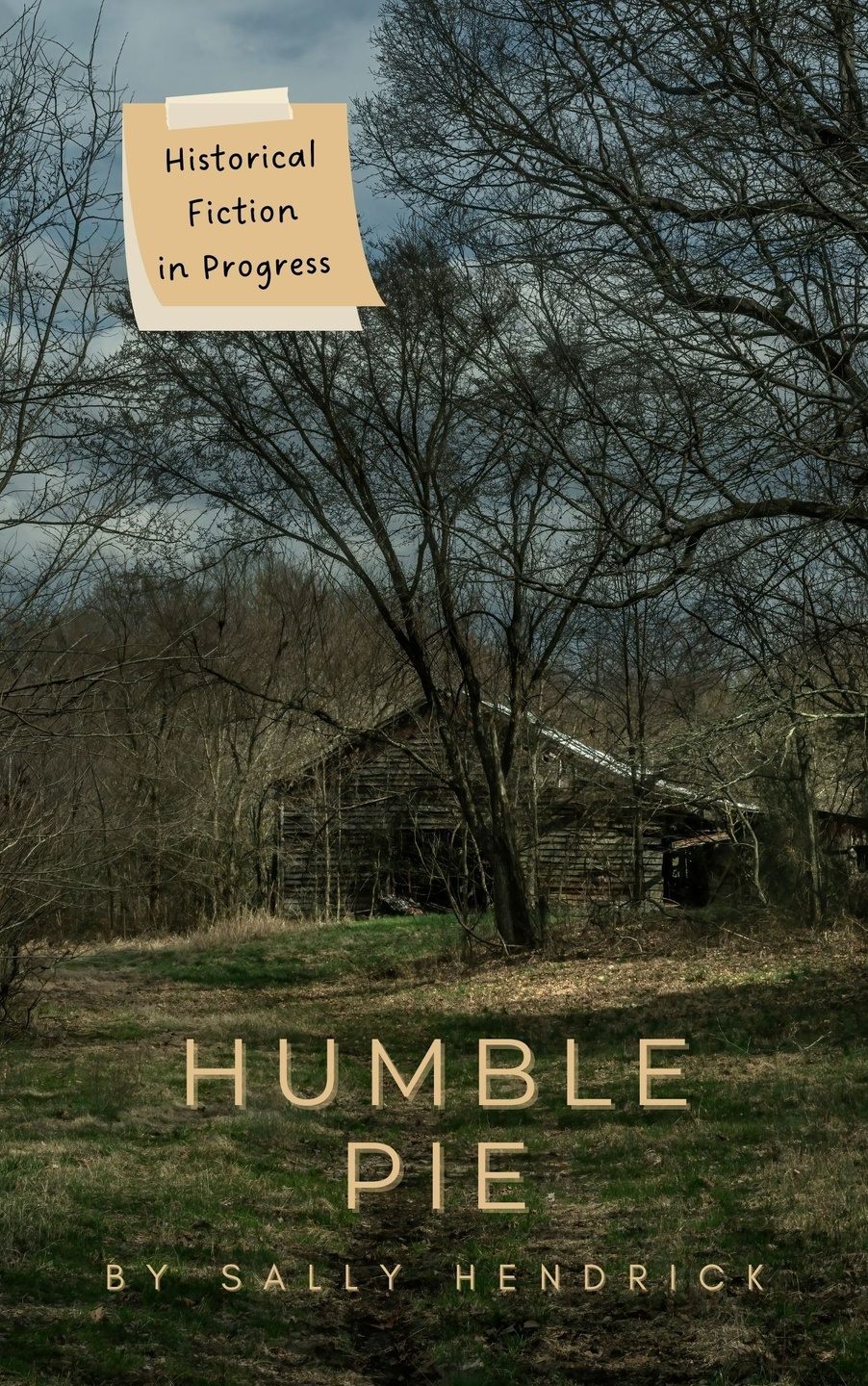What's the first thing you notice after landing?
Upon landing at the Reykjavik airport, I couldn't help but notice the bluebonnets lining the highway all the way into the city.
"Aren't those the same flowers your sister loves that bloom in Texas in the spring?"
I made sure to get plenty of pictures and videoes along our journey that encircled half the island. But they're not native to Iceland. Also known as lupine, these plants were introduced to help with soil erosion, one of the biggest problems facing Iceland's landscape. Instead of being helpful though, they're considered invasive and are thought to have spread too much, adding too many alkaloids to the soil, keeping sheep and goats at bay due to their bitterness.
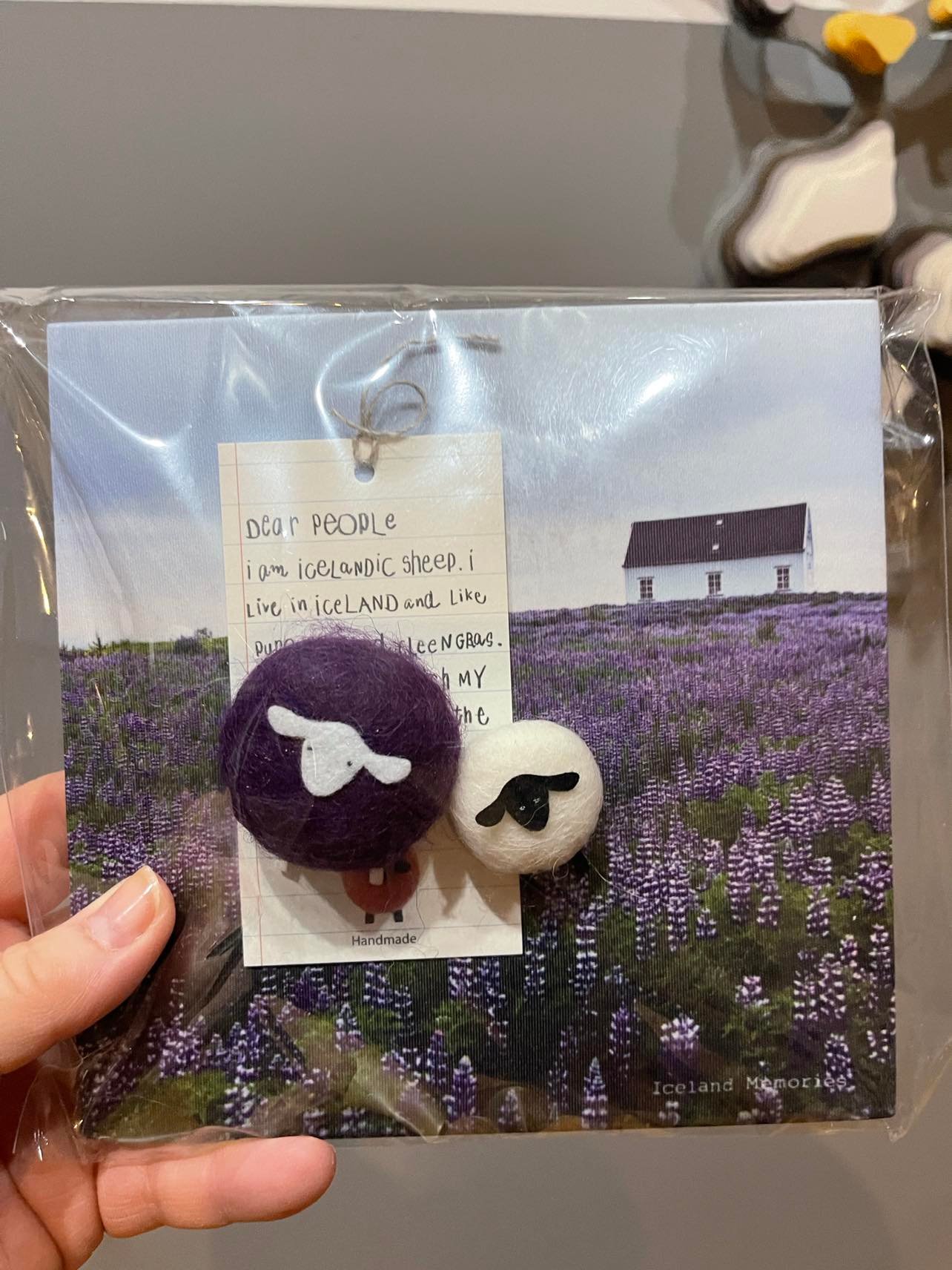
Photo credit: Sally Hendrick, Reykjavik, Iceland, souvenir.
It was only fitting to buy this magnetic photograph with two felt sheep magnets to place on top as a gift for my husband's sister, as she enjoys taking family photos in the bluebonnet fields near her Texas home.
Iceland is weird and fun and quirky
My TikTok account blew up again, not for my usual social research content, but for pointing out Icelandic cultural phenomena and quirkiness. Looking at various male genitalia from the animal kingdom was not on my list of things to do, but how can you pass up The Icelandic Phallological Museum, AKA The Penis Museum, in downtown Reykjavik.
@shoutyourcause The cheesecake was a vanilla skyr cake. Skyr is Icelandic yogurt.
♬ original sound - Sally with a Why
Little did we know before entering the doors from the parking garage, the museum had been relocated from Husavik, a small town about an hour from Akureyri. We drove there one evening to have dinner on our way back from a full day of sightseeing around the area before venturing back to Hotel Akureyri. Nice town about as close to the Arctic Circle as a person can get. I remember seeing signs saying it was 60 km, even as low as 30 km, away as we drove around.
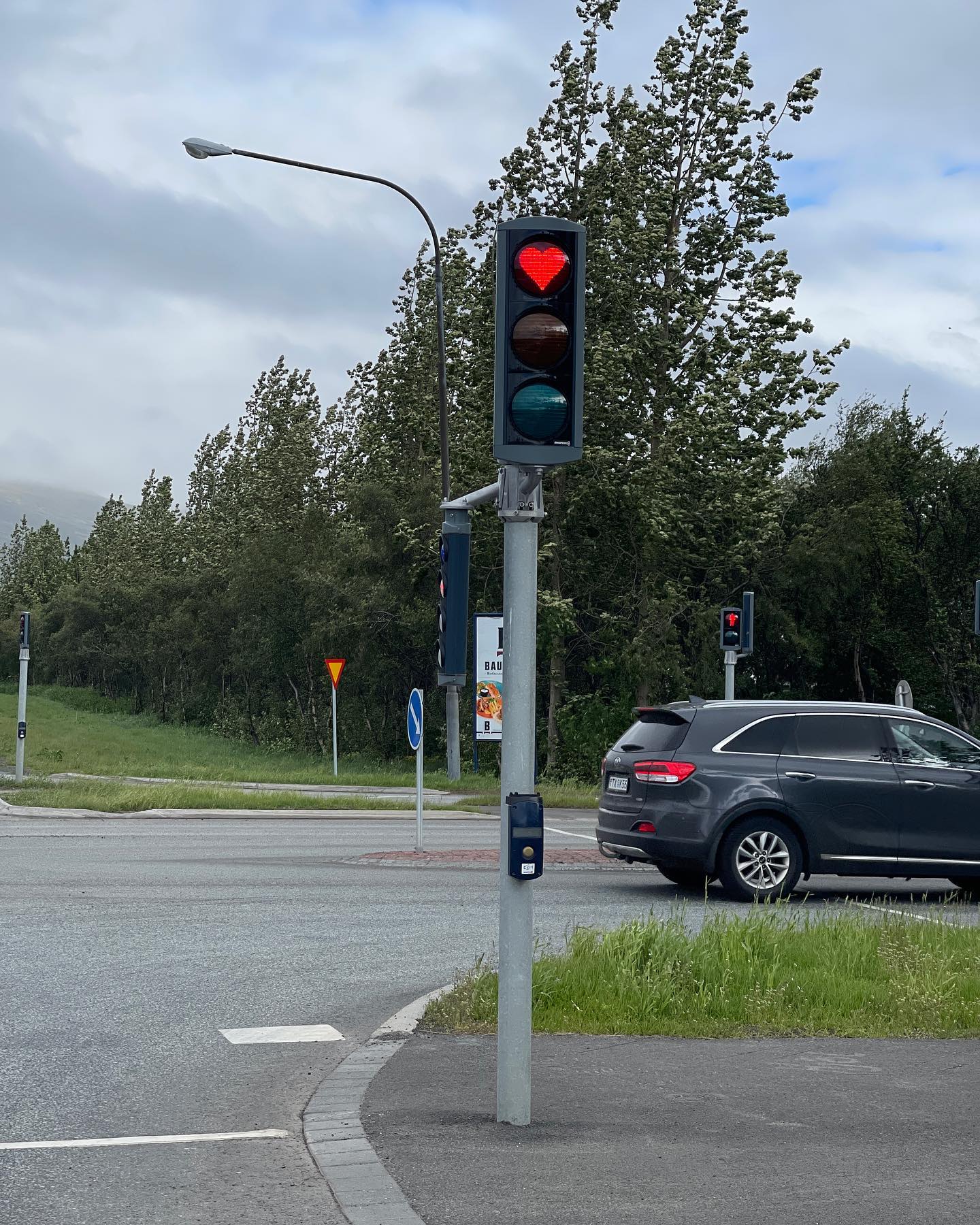
Photo credit: Sally Hendrick, Akureyri, Iceland, traffic light. Gives new meaning to 'Stop in the Name of Love'.
Speaking of quirky, at one of our stops to fill up the gas tank, we ran across signs and products that brought on much laughter, like finding lime-flavored Coca-cola and a sign on a unisex toilet. Don't get me started on how the underground public toilets in Reykjavik have been turned into a punk rock museum with remnants of anarchy, Bjork video clips, and crude quotes throughout. It was worth the 1000 Isk ($8 US Dollars) entry fee.
View this post on Instagram
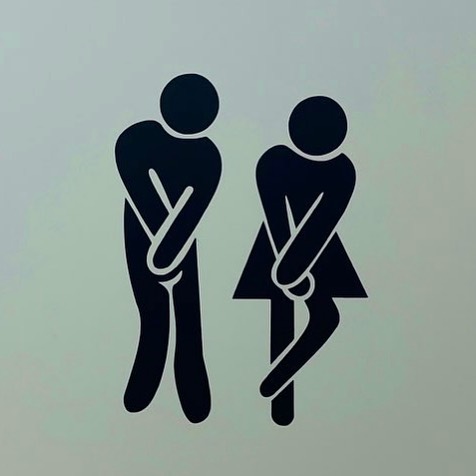
Photo credit: Sally Hendrick, Ring Road, Iceland, sign on a unisex toilet.
We didn't plan ahead for anything on this trip
The only thing we set in stone was the rental of the small apartment in Reykjavik as our place to spring from. The last time we were here with our three children, we only did day trips with tour companies to keep things simple. This time, it was just the two of us, a rental car, and a credit card, which is all you need in Iceland, no matter where you are.
There wasn't any part of the island where we couldn't get Internet or GPS, though we stuck mainly to the Ring Road (Route 1). We learned the traffic and weather warning systems, which are quite complicated with wind speed, wind direction, temperature, and the likelihood of danger. Even our phones told us not to take a particular route back to our hotel, as the tunnel was blocked for some reason, likely a car accident.
We decided on two main excursions: Thingvellir and Akureyri
Things to do at Thingvellir
Having traveled here before, I knew it was one of the world's continental divides, this one located between North America and Eurasia. But we were in for a treat by signing up for a snorkeling trip. Yes, you can snorkel in the middle of Iceland. It's definitely cold, but that's why we wore dry suits over our regular street clothes. Remember to wear socks, as they're required, and this silly, southern girl didn't even think about needing socks. Thankfully, one of the tour guides for Troll Expeditions hooked me up with a pair.
The fish of Lake Pingvallavatn stay away from the snorkelers by remaining in the larger part of the lake, but the view is beautiful all the same. The algae are lime green, resembling long, thin spaghetti noodles, and the crevasses are deep and jagged with the fluorescence of the algae lighting them up. The current was mild the day we swam through, which I was thankful for. We were warned to take a hard left before reaching the larger open lake, as the current there would be too difficult to get back to safety. They would have to deploy a helicopter to pluck you from the lake, and that was definitely not something I wanted on my list of things that happened at Thingvellir.
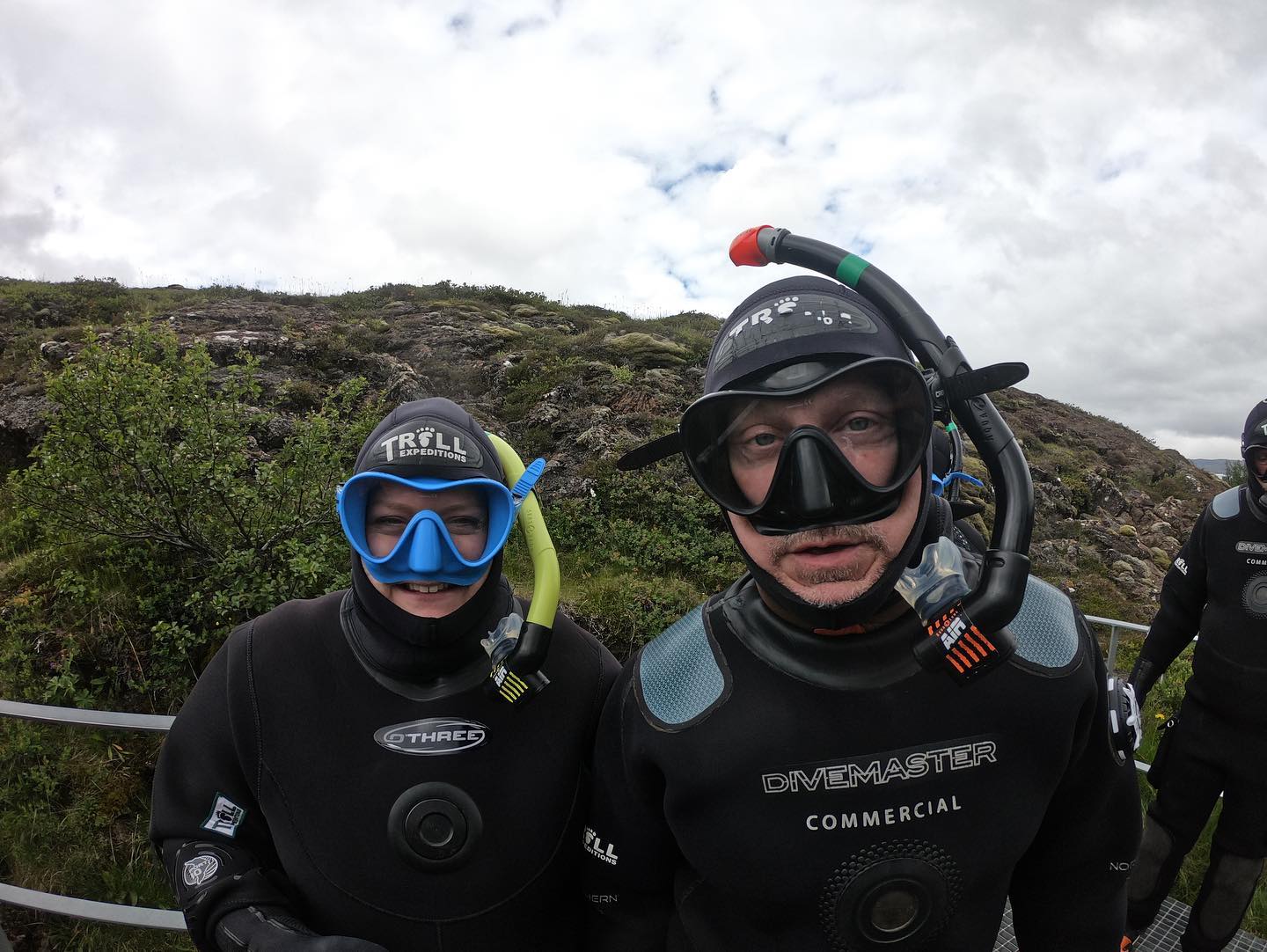
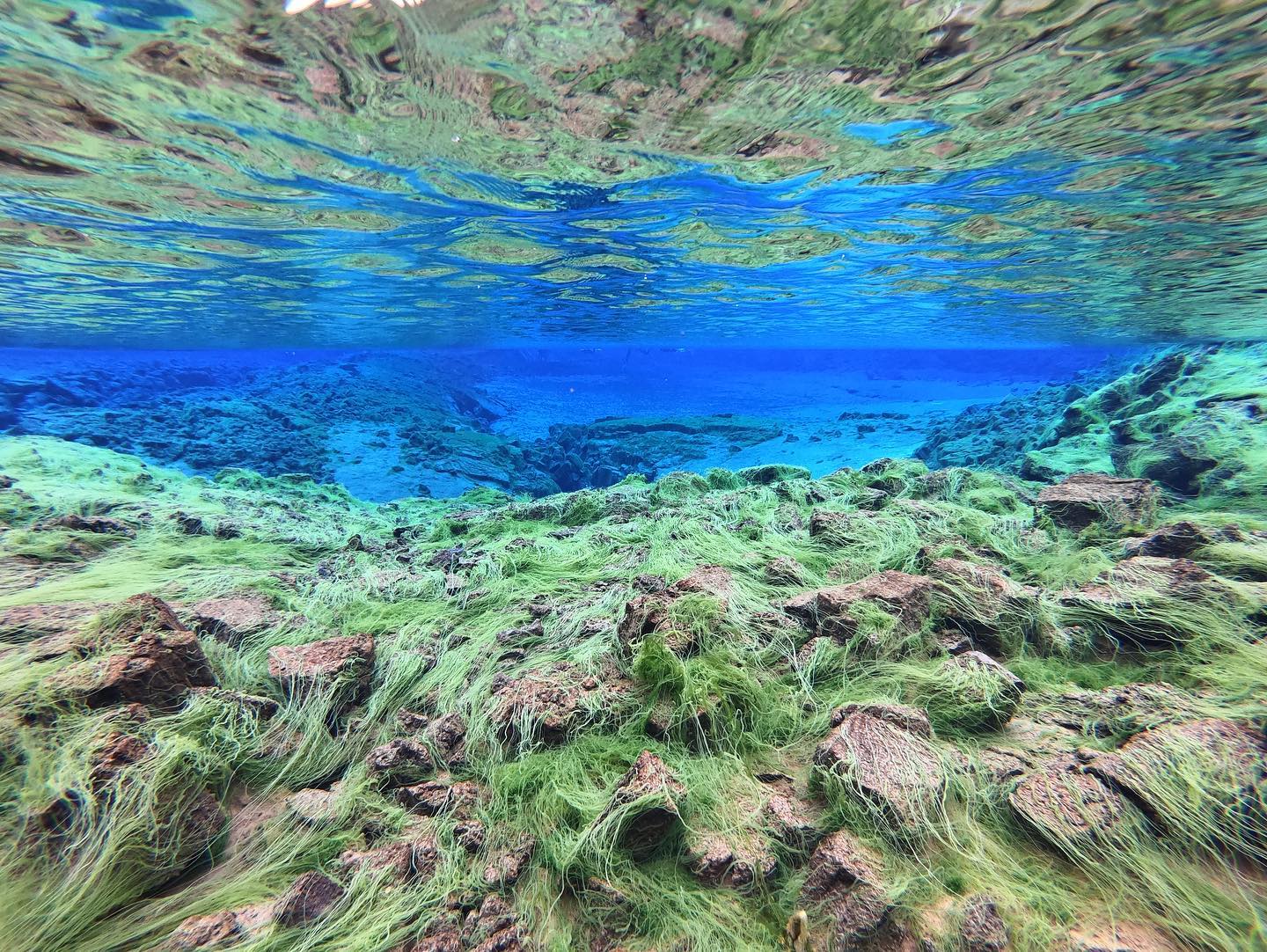
Shocking history makes for great storytelling
Initially, I thought that we wanted to revisit Vik in the southern part of the island, see the black beaches again, and maybe take the ferry over to Vestmannaeyjar (Westman Islands), which had a terrific volcanic eruption in 1973, dislocating many families who fled to other parts of the island. We met one such lady who said her parents left with her family after 400 buildings were damaged. They relocated to Akureyri. She has since revisited Vestmannaeyjar and told us of a home that is half preserved under volcanic ash. It acts as a tourist site today.
When we were there in 2015, it was the same week as the Westman Islands Festival, a binge-drinking festival of bonfires, Viking traditions, and the performance art reenactment of the Eldfell volcanic eruption. But we had our kids with us, so we declined to attend. It didn't make the list this time either, so it gives us another reason to return to this beautiful country.
A large number of women were taken to Iceland as slaves, many of whom became wives. At one point, one of the slavemasters was killed, and the slaves escaped to the Westman Islands. That's how they got their name because it's where men from the west had escaped to.
Instead of driving south, we drove north to Akureyri
Our first few days were spent getting our bearings in Reykjavik, seeing some of the city's museums, and planning a longer trip away from the city. After hours of research and getting nowhere on what we wanted to do near Vik, we changed direction and decided to pack our bags and drive north the very next morning. We took a chance on Hotel Akureyri Dynheimar, and it did not disappoint. The eclectic design, funny pictures and signs, and perfect bathrooms made up for the tiny bedroom with wall-to-wall bed. We only wish we could have experienced the restaurant, Ska, beyond breakfast delivery, as it's under renovations for a Michelin star chef, Gunnar Karl Gíslason, to come set up shop.


From this place, you can access Husavik, Lake Myvatn, the boiling mud pits at Namafjall and Hverir, Godafoss waterfall, and much more. We decided to visit the waterfall, the lake, the mud pits, and a geothermal spa that featured two large outdoor pools heated by the nearby volcanic activity.
@shoutyourcause Yes, its worth the drive from Reykjavik to Akureyri to see Lake Myvatn, Godafoss waterfall, and the boiling mud pits. We loved our funky hotel. #iceland #akureyri #myvatn ♬ Cats on Mars - Seatbelts
Because of the pandemic, plans changed
My original plan was to travel to Iceland in 2020 for a business conference, back-to-back with another conference in England. I'd had my ticket for two years, and the conference was back on for 2022! I immediately bought my plane tickets and convinced my husband to come along for the break. In a matter of days, the conference was canceled again. There were too many unknowns for others about COVID and about the war outbreak in Ukraine. Many of the women were afraid they wouldn't be able to make it back home.
But plans change, especially in Iceland's fragile history.
In the 15th century, half the population is believed to have perished. The Black Death took 50 years to travel from Europe to Iceland where it arrived in the early 1400s. It returned again about 90 years later, leaving behind abandoned farmlands that the church and other landowners snatched up as their own.
Around this same time in history, the King of Denmark rose to rule over Norway, which already held power over Iceland. The royal families of Norway and Denmark united, giving the crown of all of it to the Danish. With Iceland's population being so small, it was easily taken over in more ways than one.
Religion has its place in Icelandic history
As a means of controlling people's behavior and their money, religion is a social tax on willing participants who have no other way to gain power within their communities. The ultimate poor man's status symbol is the preacher, as he is not privy to the money and connections it takes to win the commerce game.
In Iceland, religion has played a role in societal power structures since the beginning of time. Religion has toyed with Iceland's volatile landscape as an explanation for challenging times, to which Iceland is no stranger. The more volatile the earth, the less stable are the people. As quickly as illness swept across the nation, religion followed in order to explain it according to the agenda of those in power.
Christianity was established around 1000 AD in Iceland under the direction of the King of Norway. Some still practiced pagan rituals, as was allowed only privately, but it wasn't long before evidence of pagan relics completely disappeared. In the 14th century, the King of Denmark overtook Norway, which in turn gave him rights to Iceland. Over time Lutheranism rose above Catholicism, with the last bishop being executed around 1550.
Disease and disaster continue to rock the island
Smallpox killed a quarter of Iceland's population in the early 1700s, and harsh natural conditions in the 1750s caused famine. A volcanic eruption later in the 18th century followed another bout of famine that removed one-fifth of the population.
With population-threatening events as the status quo, no wonder Iceland was so strict in the beginning when COVID-19 broke out. There wasn't a time I didn't feel safe from other people while having a natural fear of the elements outdoors that surrounded us. The trip was easy, a lot like it was the last time we were here with our children.
It wasn't until I returned home that I realized how much I needed a change of scenery, even if it changed every five minutes as we drove. At least COVID-19 didn't come to find me until I was back at home to get ready to travel again.
Would you like to travel to Iceland?
It's easy! Just find a flight from your city to KEF, Keflavik, the town about 45 minutes outside of Reykjavik, Iceland, where the international airport is located. Either rent a car ahead of your trip, or take a taxi into the city. There are info points that have all the tourist information you need. Bus trips are available to go on many excursions to the most famous sites.
If you have a car, you can drive the Ring Road, AKA Route 1, or any other paved roads with a regular car. If you're driving in the south, get the extra sand storm insurance, as most policies do not cover the damages from this type of loss.
If you're doing more serious hiking, whitewater rafting, camping, or glacier walking, look into renting a 4x4 vehicle in order to travel off the tarmac (pavement).
Leave plenty of time to spend in Reykjavik to visit the museums or to eat nearly any cuisine you like. Be prepared for the prices and portion sizes. Take a few minutes to drive to the MatHoll or another food court to get more food for the same price. We had a fridge in our room, so ham, cheese, and some skyr from the grocery got us through a few meals.
In case you're curious, gas prices were close to $10.50 per gallon while we were there in June 2022. Prices had just crept up over $5.00 per gallon in the USA.
Read: Iceland: Off the Beaten Path by Sally Hendrick
Sally Hendrick, editor of Shout Your Cause, brings culture to you through stories. Follow her on TikTok, where she's dropping cherry bombs and Jim Crow secrets of the south.
@shoutyourcause Stories that inspire my book in progress #humblepie #southernstories #whitewomenstears #putafingerdownchallenge ♬ original sound - Sally with a Why



